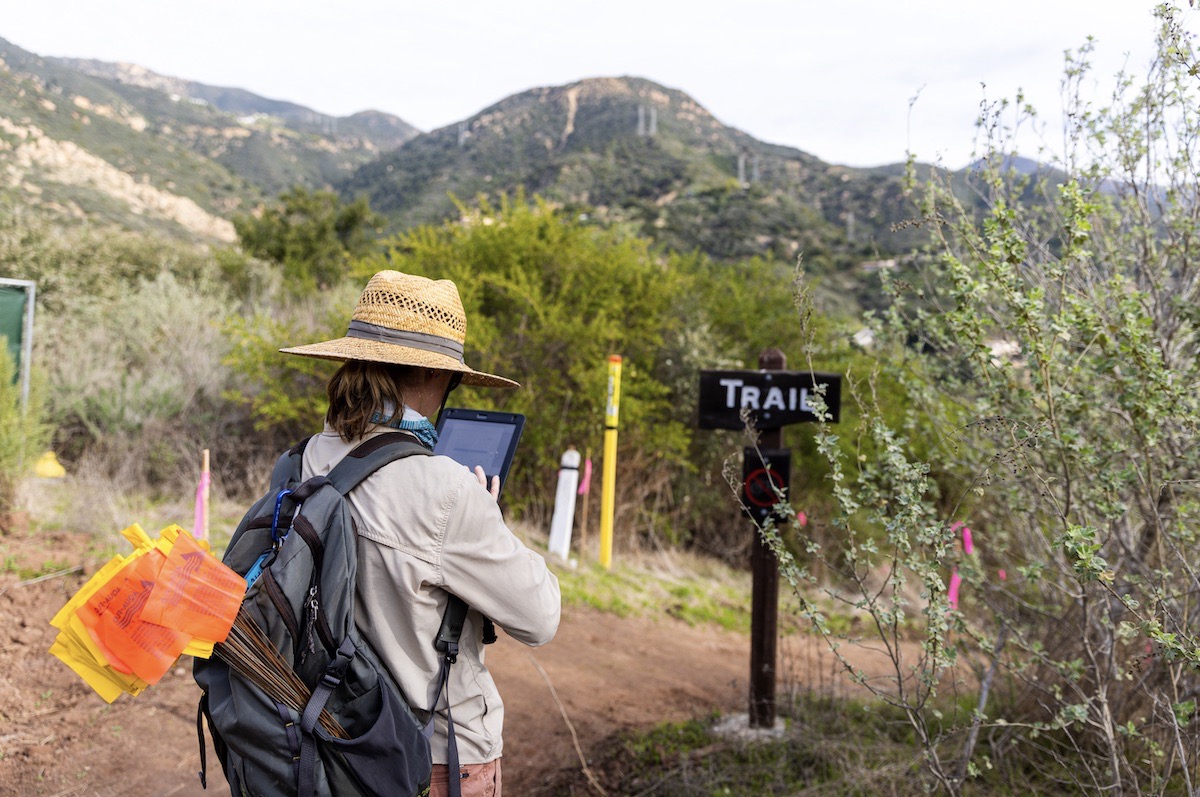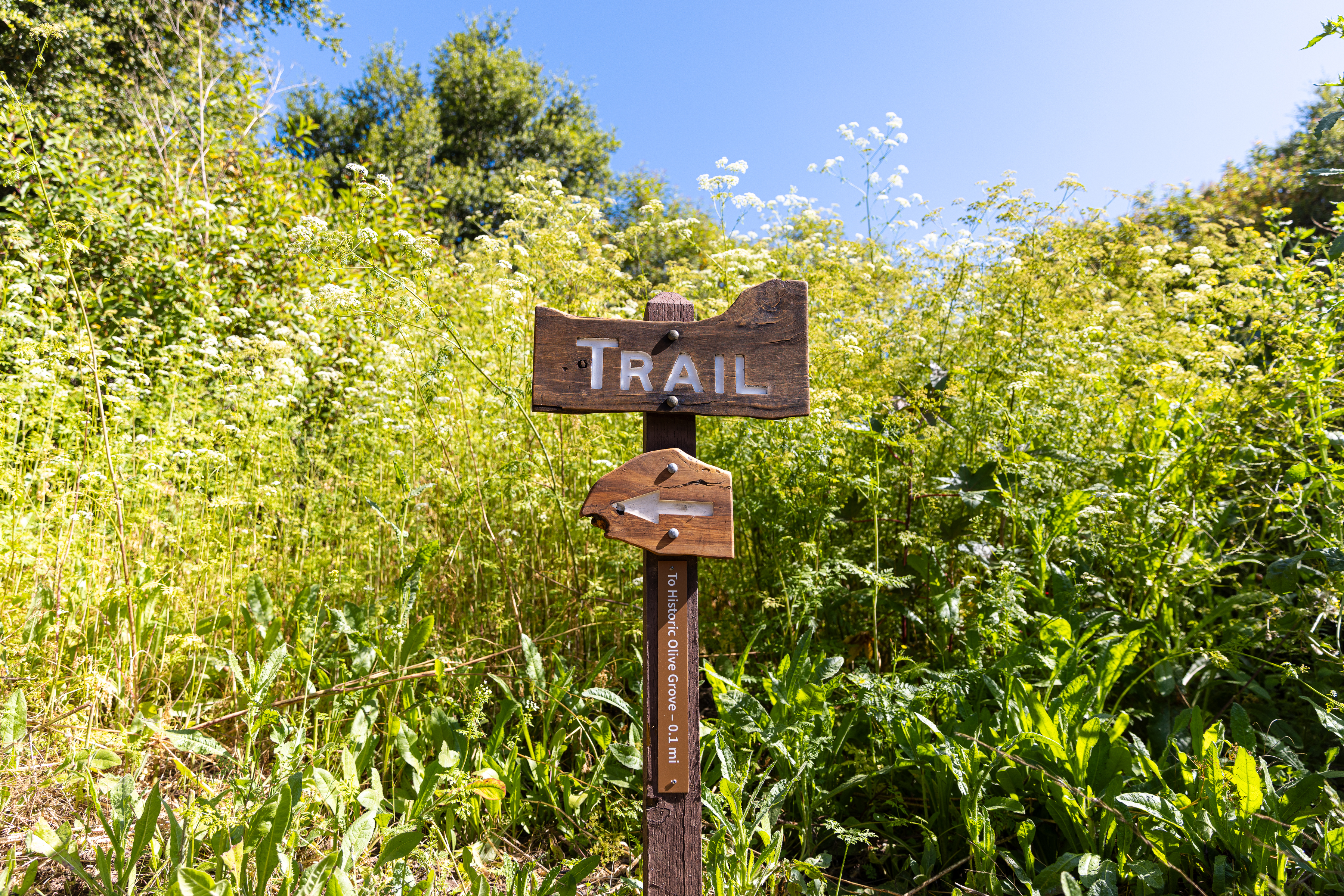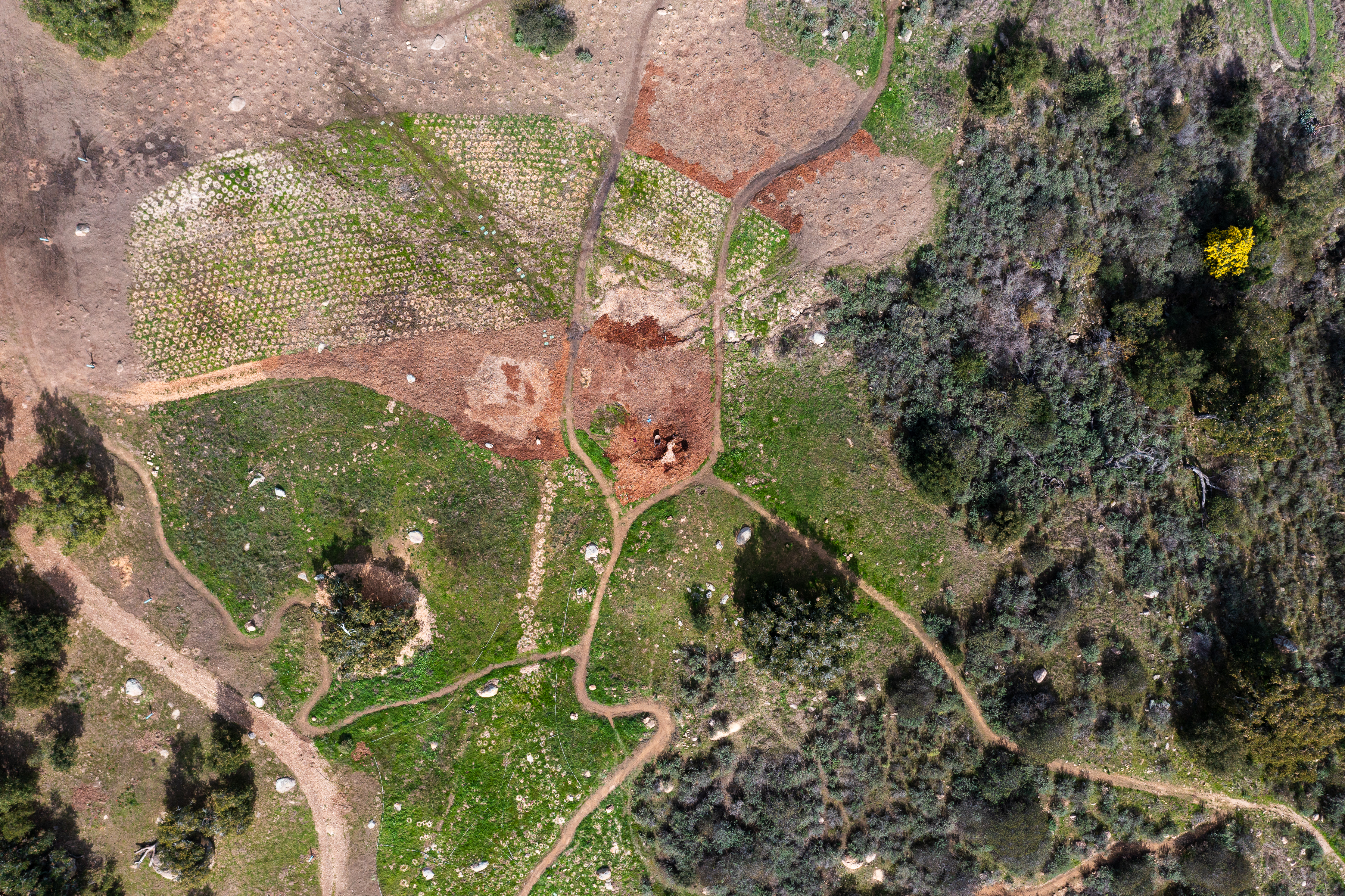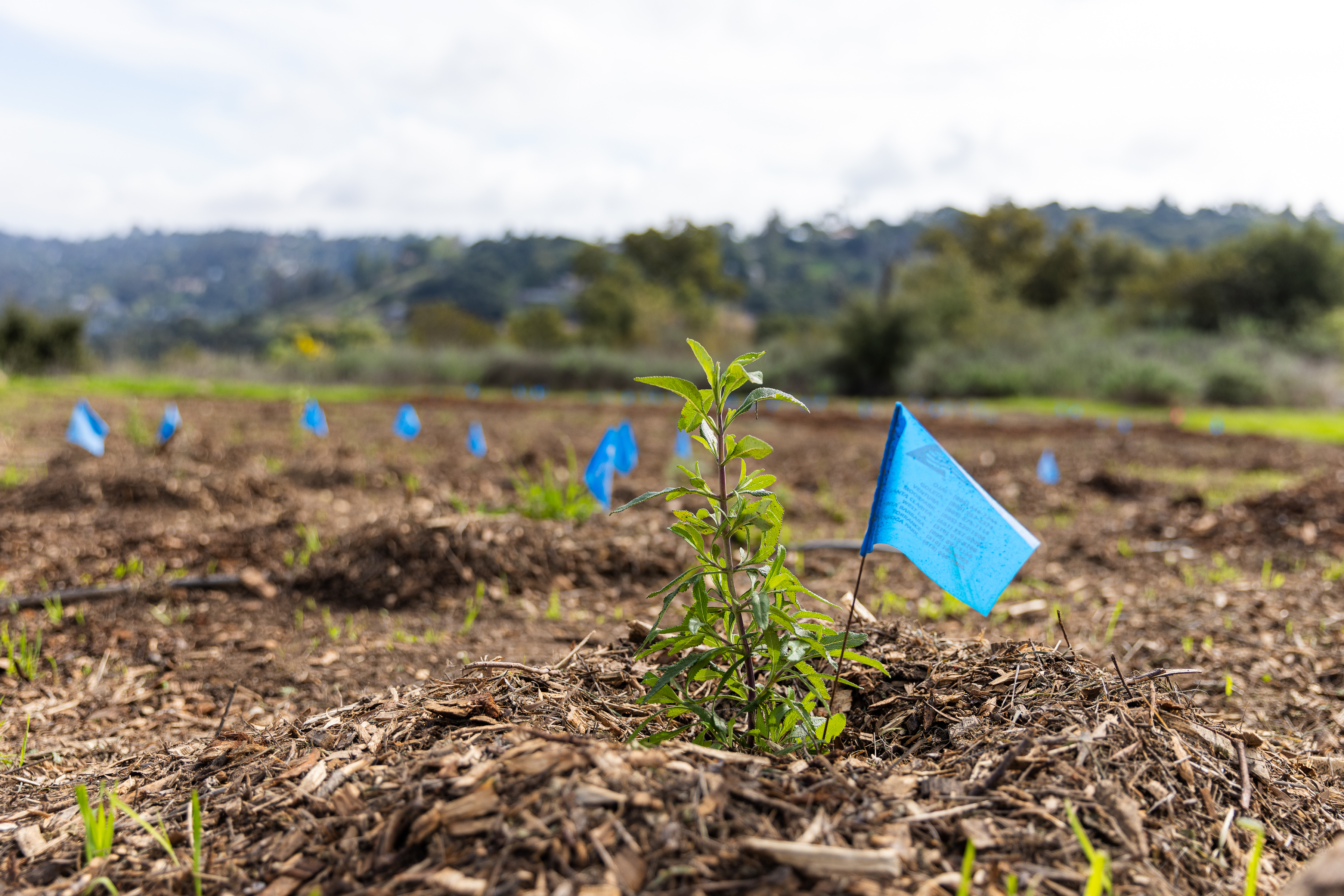Santa Barbara’s Parma Park Project Completed
New Plants and Trails Wind Through Park Overlooking Riviera

At Parma Park on Monday afternoon, a baby rattlesnake greeted Santa Barbara parks planner Monique O’Conner as she waited near the entrance of the park, which sits above the city’s Riviera. It was minutes before she took this reporter on a hike to show off the nearly 200-acre park’s new trails and habitat restoration sites.
Was she scared? No. “This is their home, not ours,” O’Conner reminded me. Hikers just need to be vigilant and respectful.
We later saw a mother deer and her fawn running through nearby brush while hiking up one of the newest trails. Tadpoles swam in the creeks underneath our feet, a turkey vulture flew overhead, and lizards were constantly darting across the path in front of us.

“We have a bunch of rad wildlife here,” O’Conner beamed.
To the benefit of both this rad wildlife and their admirers, the park’s spaghetti-noodle trail system just got a makeover. These twisty, tangled pathways host a cornucopia of native plants and habitats — grassland, scrubland, woodland, and chaparral.
While some old trails are now closed off for fresh habitat to sprout, new routes have opened. Trail-marker signs — made using recycled wood from an old olive grove that burned in the 2008 Tea Fire, which scorched the entire park — have popped up along the trail system to direct hikers through its remodeled loops and switchbacks.
“Many of the previous paths were never designed to be hiking trails, and this project was the first time we’ve had a chance to evaluate the park’s trail system as a whole,” O’Conner explained. “We’ve opened up new areas of the park while building trails that are safer and more resilient to erosion.”
The new trails just need some time to “stick,” so hikers are encouraged to explore the not-so-beaten path to help establish that tread and counter the stubborn overgrowth that refuses to get the hint.
As these trails become less overgrown over time, the opposite is true of the newly established habitat restoration areas. The former trails were ripped up to accommodate a spread of native seeds.
While many of these areas are fenced off for now, those wildflowers, grasses, and scrubs will eventually take root and become so overgrown that hikers will naturally keep their distance.
Beautiful and fragrant purple sage, Santa Barbara honeysuckle, and vibrant monkeyflower are just a few of the blooming coastal sage scrub and chaparral species that were planted, and all seeds were sourced from within the park or at least the same watershed.

Oak sprouts, which take about 50-100 years to fully mature, are growing in blue tubes within the main restoration area, which converted four acres of nonnative grassland to native scrub and grassland for wildlife and pollinators. These new sprouts have an opportunity their ancestors did not. Back when cattle-ranching characterized the park, many young oaks were chewed on or mowed down before they could be established.
New oaks will have a much better chance to reach maturity, and play an important role in the park’s shaded fuel break to maintain defensible space around neighboring residential properties — sporadic oak trees and scrub “islands” mean that any fire passing through the area will burn less intensely and at a lower heat.

Multicolored flags mark the different plant species interspersed throughout the area, which, set along the new Plateau Trail, was designed to be as accessible as possible. Wide, flat paths make it a gentle walk. O’Conner said her mother was able to enjoy it even after two knee replacements.
Around 80 percent of the seeds have survived, thanks to the park planners’ “plant densely and accept some loss” strategy. The biggest trouble, O’Conner said, was that the clay-heavy soil was too wet after the intense winter rains. However, the rain did, at least, drown some pesky gophers and help save on water costs.
Amid those restoration areas along the park’s seven miles of trail, the Historic Olive Grove Loop is being maintained to preserve the land’s history. The park was a cattle ranch and olive orchard before being gifted to the city in 1973 for use by hikers and equestrians.
The Parma family — the original land owners — set up a trust to fund ongoing management of the park, which paid for the improvements alongside grants from CALFire and the Coastal Conservancy.
The Santa Barbara City Council, Parma Park Trustees, and the Parks and Recreation Department will celebrate the completion of the project on July 25 at 4:30 p.m. at the El Cielito Entrance of Parma Park. The public is invited to learn about the details of the project before embarking on an optional guided half-mile walk through the restoration site. Starting at approximately 5:00 p.m., a more strenuous 2.5-mile hike will lead attendees through some of the park’s newest trails.
Premier Events
Sun, Dec 22
11:00 AM
Santa Barbara
Mosaic Makers Market – Holiday Market Finale
Wed, Dec 25
6:00 PM
Santa Barbara
FREE Contra Dance X-mas Day💃Corwin & Grace band6-9
Sun, Dec 22
11:00 AM
Santa Barbara
Mosaic Makers Market – Holiday Market Finale
Sun, Dec 22
2:00 PM
Santa Barbara
Santa Paws Holiday Party – A Howliday Celebration
Tue, Dec 24
2:00 PM
Santa Barbara
Brass Bear Christmas Eve Buffet
Tue, Dec 24
5:00 PM
Santa Barbara
Christmas Eve at the USSB
Wed, Dec 25
5:30 PM
Santa Barbara
Christmas Dinner at El Encanto
Fri, Dec 27
6:00 PM
Solvang
New Year Disco Ball Paint & Sip
Fri, Dec 27
9:00 PM
Santa Barbara
Film Screening: “Indiana Jones and The Last Crusade”
Sat, Dec 28
7:00 PM
Lompoc
Rosie Flores & Grey DeLisle + Special Guests LIVE
Sat, Dec 28
7:00 PM
Carpinteria
Family Comedy Night at The Alcazar
Sat, Dec 28
7:00 PM
Santa Barbara
The Temptations at Casa De La Raza
Sun, Dec 22 11:00 AM
Santa Barbara
Mosaic Makers Market – Holiday Market Finale
Wed, Dec 25 6:00 PM
Santa Barbara
FREE Contra Dance X-mas Day💃Corwin & Grace band6-9
Sun, Dec 22 11:00 AM
Santa Barbara
Mosaic Makers Market – Holiday Market Finale
Sun, Dec 22 2:00 PM
Santa Barbara
Santa Paws Holiday Party – A Howliday Celebration
Tue, Dec 24 2:00 PM
Santa Barbara
Brass Bear Christmas Eve Buffet
Tue, Dec 24 5:00 PM
Santa Barbara
Christmas Eve at the USSB
Wed, Dec 25 5:30 PM
Santa Barbara
Christmas Dinner at El Encanto
Fri, Dec 27 6:00 PM
Solvang
New Year Disco Ball Paint & Sip
Fri, Dec 27 9:00 PM
Santa Barbara
Film Screening: “Indiana Jones and The Last Crusade”
Sat, Dec 28 7:00 PM
Lompoc
Rosie Flores & Grey DeLisle + Special Guests LIVE
Sat, Dec 28 7:00 PM
Carpinteria
Family Comedy Night at The Alcazar
Sat, Dec 28 7:00 PM
Santa Barbara

















































You must be logged in to post a comment.